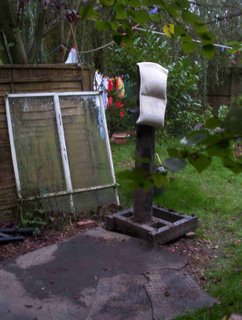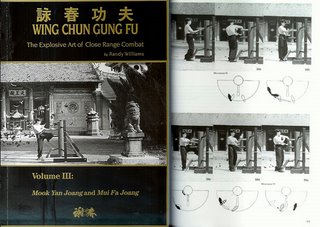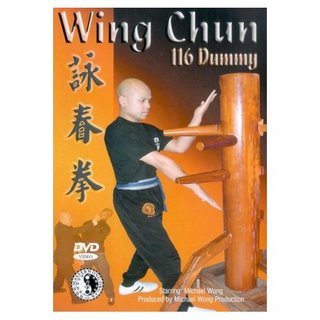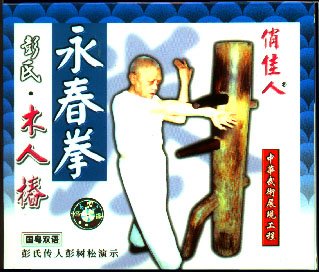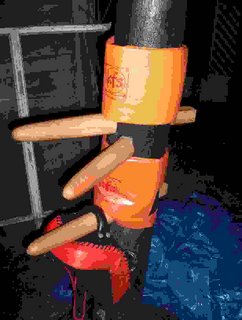http://www.johncarrigan.co.uk/
This is a link to someone who got me introduced into the martial ats. He is an original Jeet Kune Do practitioner. There is a rare video tape of him using a wooden dummy in JKD way. This differs from formal Wing Chun becuase the attacks are using moves from other styles and the footkwork doesnt keep the centre line square to the dummy that often.
http://www.awcaonline.com/
This is an interesting place to visit. It has distance learning ideas for Wing Chun and posts videos and commentry. The ideas in this place are thought provoking and has good mission statment to avoid Wing Chun politics [ie the disputes which substyle is 'the best']. I would very much like to see the distance learning program online and live link up to class with feedback potential. The idea is bold.
http://www.youtube.com/watch?v=AWfK6aqWiNU
MMA's contribution and the 'dead patterns debate'
The arguemt posted here in this link is debated elsewhere on the www. It challenges traditional drills and claims they have no function alone - if at all. This implies that much of the drilling material done in many do jos / kwons gyms is not functional.
The counter to this debate is taken up by Mark Denny from The Dog Brothers. He'd argue that drills have a use but you need to know what your looking at when they *are* being applied.
Its a good debate. If you invest time in any form of drilling be aware of this debate and where you think your training does / doesnt stand within this. Its vital to be questioning your learning and practice.
The wooden dummy I think would not be liked by Matt Thornton. Its 'dead' and not alive. My take is its a supplement like a vitamin pill. Its not your dinner its an aid. You can vary the way you train on it to get it more realistic that pure 108 movements style form. Some imagination is needed though. Remember its for those without a training partner.
http://www.ukwingchun.com/Wooden_Dummy.htm
Some useful tips on the dummy are on Steve Sinclair's web site. For example he warns against the implications of having a gap between the floor and the leg of the dummy. This allows the student to avoid the circling movment when moving around the dummy.
The advice for jut gerk (pulling leg or jerking leg ?!) is interesting - stop too deep and you get judo thrown. Step too shallow and you cant get leaverage and you can be sweapt. Sound advice.
Out of interest I have Steve Sincalair's tape Wing chun pure and simple. This is a good tape. What I liked about this was he gives advice on how to condition your hands and shows you how to use a sandbag. He shows you how to rub in dit da jow(hit fall wine) into your knuckles etc. He said Brandy could be a substitute. All good advice. Also I liked the way he gave pros and cons to movemnt and footwork methods. How refreshing. This empowers to the Wing Chun student because they are given choices and freedom to think with in the theoretcial framework of the system. Its not all 'laws' that are relevant in all contexts.
